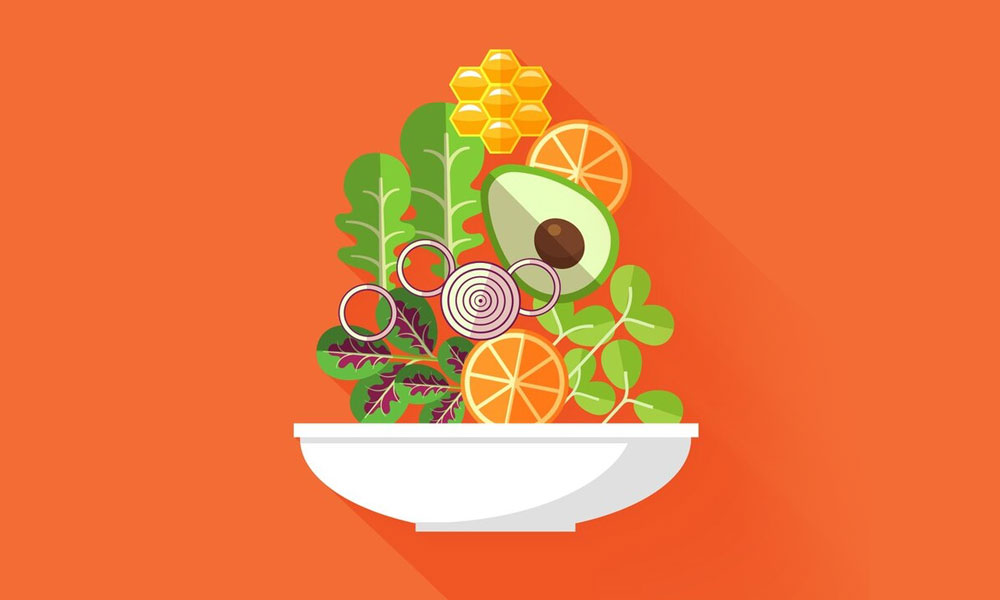Hi!
If you celebrate Thanksgiving, I hope you’re looking forward to a long weekend filled with good people and good food.
As you know from my teachings, losing weight and eating healthy isn’t about perfection—it’s about portion and balance (aka portion, not perfection). A well-balanced plate helps you stay full, nourished, and on track without feeling deprived.
I’m asked often what a plate should look like that’s geared toward weight loss. We need to know how many fruits and veggies we should eat per day (the goal is one fruit per day and three cups of veggies per day), how much meat, etc.
Today, I am going to give you a rough guide on how you should be building your plate. This will provide a good starting point to see what you still need to improve.
What your plate should look like most of the time.
1. Half Your Plate: Veggies for Volume and Fiber
Think of veggies as your go-to for adding bulk to meals without adding bulk to you. They are filled with fiber.
Why Fiber is a Game-Changer:
- It fills you up without packing on the calories.
- Slows digestion, keeping you satisfied longer.
- Helps avoid those “hangry” moments that can derail your day.
Examples: Broccoli, cauliflower, kale, bell peppers, cucumbers, zucchini, squash, peas, etc. Stay away from the highest oxalate veggies like spinach and beets.
Quick Tip: Roast, steam, or throw them into a salad—but whatever you do, don’t let your veggies rot in the fridge (we’ve all been there). Buy frozen and microwave them if you are in a rush. Buy bagged veggies that have no seasonings to keep sodium down.
2. A Quarter of Your Plate: Protein for Satiety
Protein is your hunger-busting BFF. It keeps you full and energized, making it easier to stick to your goals.
Why Protein is a Star:
- It reduces the hunger hormone ghrelin (less ghrelin = less grumbling stomach).
- Protein takes work to digest, meaning you burn a few extra calories just by eating it.
- It keeps your muscle mass intact so your metabolism stays strong.
Examples: Chicken, lean ground beef, turkey, fish, tofu, eggs, beans (lower oxalate beans), or low-fat Greek yogurt.
Quick Tip: Aim for a portion the size of your palm—it’s all about portion!
3. A Quarter of Your Plate: Fiber-Rich Carbs for Energy
Carbs are not your enemy. The key is choosing the right ones to fuel your body.
Why Fiber from Carbs Matters:
- It keeps your energy steady and avoids blood sugar spikes (or crashes).
- Fiber fills you up, so you’re not looking for snacks an hour later.
Examples: Sweet potatoes, quinoa, lentils, oats, or brown rice. Please note that some of these foods arehigher in oxalate, but keeping them to 1/2 cup portions is totally doable. Portion, portion, and getting calcium needs met each day.
Quick Tip: Think whole grains, not white bread. White carbs won’t fill you up because of the blood sugar spikes and drops. The added fiber whole grains provide (and protein in some cases) will keep blood sugar more steady, and you won’t get that starving feeling one hour after eating.
4. A Small Portion of Healthy Fats
Don’t fear fats—they’re essential. Just keep the portions in check.
Why You Need Fats:
- They help you absorb important vitamins (A, D, E, K).
- Fats slow digestion, keeping you satisfied longer.
Examples: Avocado slices, olive oil, nuts, seeds, or salmon. Once again, checking oxalate from your list is all doable. Avoid almonds, cashews, and chia seeds- all other nuts and seeds are fine within portion, and getting your calcium needs met each day is crucial.
Quick Tip: A small handful or a couple of tablespoons is all you need. Fats are calorie-dense, so less is more.
Why Fiber + Protein is the Dream Team
Here’s the deal: fiber and protein work together to keep hunger at bay and energy steady.
- Fiber fills your stomach, slows digestion, and stabilizes blood sugar (aim for 25-35 grams daily).
- Protein helps you stay full, builds muscle, and keeps your metabolism humming. See how much total protein is suitable for you in this article.
They’re like the dynamic duo of appetite control—lean on them!
Making It Work in Real Life
- Prep Ahead: Chop veggies, cook proteins, and have whole grains ready to grab. You’re less likely to make impulsive choices when healthy options are accessible. Here is my meal plan service to get you started. Do it for one month and get hundreds of KSD-friendly recipes with all the oxalate, calcium, sodium, etc, figured out for you in each meal.
- Keep Portions Realistic: Use smaller plates or bowls if it helps, and remember: portion, not perfection.
- Treat Yourself, Then Move On: Enjoy a treat now and then—it’s part of life. When you do, get back to work with your next meal. No guilt, no shame. That’s how we do in on the Kidney Stone Diet®.
This isn’t about restriction or endless dieting— dieting means you are not staying on it forever. This is about creating a lifestyle—one that you create forever. It’s about eating smart, staying balanced, and creating habits you can live with. It’s about eating responsibly. You’ve got this, and I’m here cheering you on!
Your friend and advocate,
Jill
P.S. This week in the U.S. is Thanksgiving. Enjoy yourself. This may include pie. So what. Get back to work on Friday! Have your treats and get back on the streets!














Leave a Reply